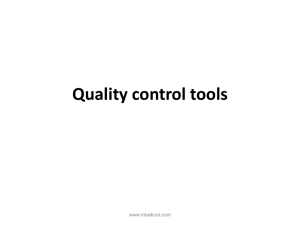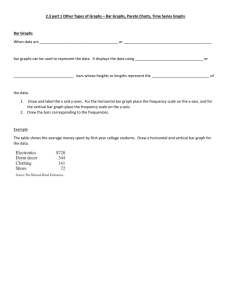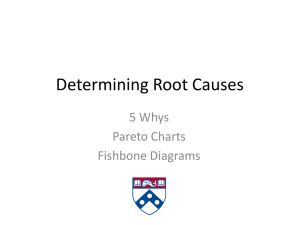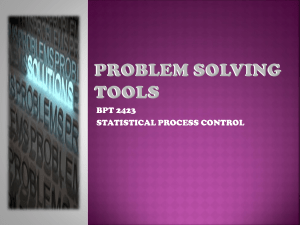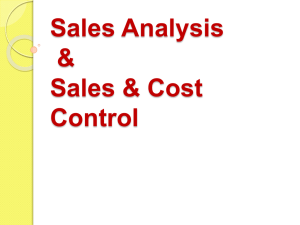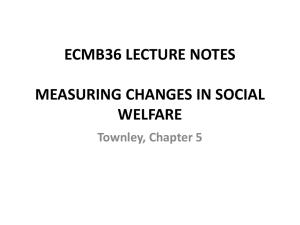Time Management - The Pareto Principle (Pareto`s Law)
advertisement
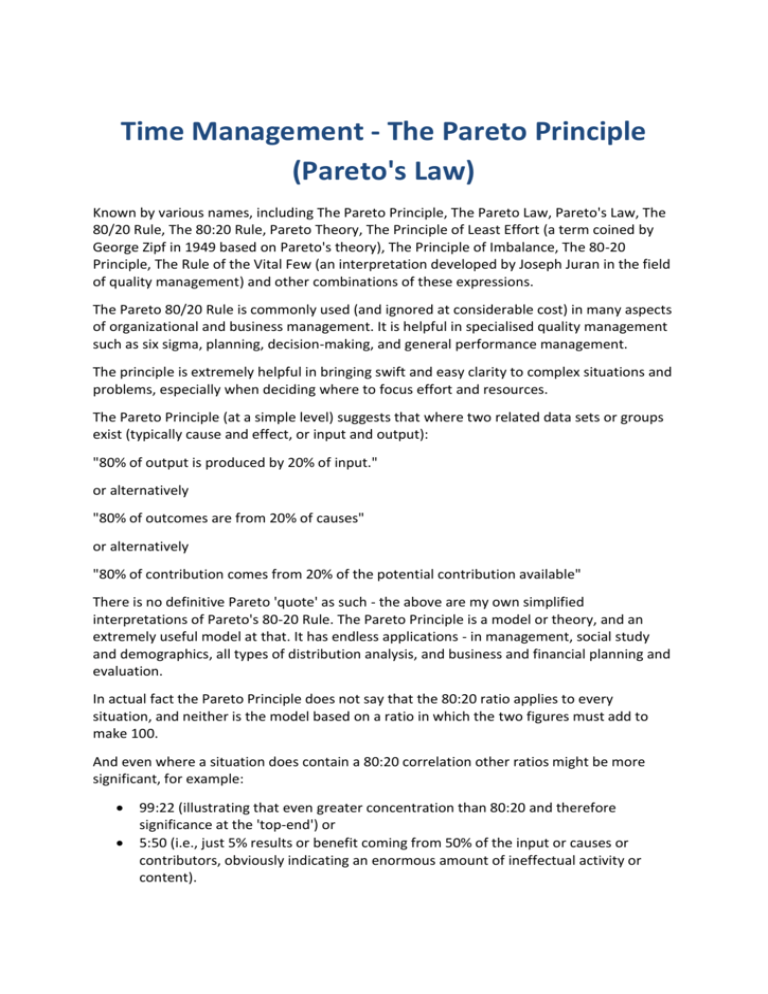
Time Management - The Pareto Principle (Pareto's Law) Known by various names, including The Pareto Principle, The Pareto Law, Pareto's Law, The 80/20 Rule, The 80:20 Rule, Pareto Theory, The Principle of Least Effort (a term coined by George Zipf in 1949 based on Pareto's theory), The Principle of Imbalance, The 80-20 Principle, The Rule of the Vital Few (an interpretation developed by Joseph Juran in the field of quality management) and other combinations of these expressions. The Pareto 80/20 Rule is commonly used (and ignored at considerable cost) in many aspects of organizational and business management. It is helpful in specialised quality management such as six sigma, planning, decision-making, and general performance management. The principle is extremely helpful in bringing swift and easy clarity to complex situations and problems, especially when deciding where to focus effort and resources. The Pareto Principle (at a simple level) suggests that where two related data sets or groups exist (typically cause and effect, or input and output): "80% of output is produced by 20% of input." or alternatively "80% of outcomes are from 20% of causes" or alternatively "80% of contribution comes from 20% of the potential contribution available" There is no definitive Pareto 'quote' as such - the above are my own simplified interpretations of Pareto's 80-20 Rule. The Pareto Principle is a model or theory, and an extremely useful model at that. It has endless applications - in management, social study and demographics, all types of distribution analysis, and business and financial planning and evaluation. In actual fact the Pareto Principle does not say that the 80:20 ratio applies to every situation, and neither is the model based on a ratio in which the two figures must add to make 100. And even where a situation does contain a 80:20 correlation other ratios might be more significant, for example: 99:22 (illustrating that even greater concentration than 80:20 and therefore significance at the 'top-end') or 5:50 (i.e., just 5% results or benefit coming from 50% of the input or causes or contributors, obviously indicating an enormous amount of ineffectual activity or content). The reasons why 80:20 has become the 'standard' are: the 80-20 correlation was the first to be discovered 80-20 remains the most striking and commonly occurring ratio and since its discovery, the 80:20 ratio has always been used as the name and basic illustration of the Pareto theory. Here are some examples of Pareto's Law as it applies to various situations. According to the Pareto Principle, it will generally the case (broadly - remember it's a guide not a scientific certainty), that within any given scenario or system or organisation: 80 % of results come from 20 % of efforts 80 % of activity will require 20 % of resources 80 % of usage is by 20 % of users 80 % of the difficulty in achieving something lies in 20 % of the challenge 80 % of revenue comes from 20 % of customers 80 % of problems come from 20 % of causes 80 % of profit comes from 20 % of the product range 80 % of complaints come from 20 % of customers 80 % of sales will come from 20 % of sales people 80 % of corporate pollution comes from 20 % of corporations 80 % of work absence is due to 20 % of staff 80 % of road traffic accidents are caused by 20 % of drivers 80 % of a restaurant's turnover comes from 20 % of its menu 80 % of your time spent on this website will be spent on 20 % of this website and so on.. Remember for any particular situation the precise ratio can and probably will be different to 80:20, but the principle will apply nevertheless, and in many cases the actual ratio will not be far away from the 80:20 general rule. Such a principle is extremely useful in planning, analysis, trouble-shooting, problem-solving and decision-making, and change management, especially when broad initial judgements have to be made, and especially when propositions need checking. Many complex business disasters could easily have been averted if the instigators had thought to refer to the Pareto Principle as a 'sanity check' early on. Pareto's Law is a tremendously powerful model, all the more effective because it's so simple and easy. For example, consider an organisation which persists in directing its activities equally across its entire product range when perhaps 95% of its profits derive from just 10% of the products, and/or perhaps a mere 2% of its profits come from 60% of its product range. Imagine the wasted effort... Instead, by carrying out a quick simple 'Pareto analysis' and discovering these statistics, the decision-makers could see at a glance clearly where to direct their efforts, and probably too could see a whole lot of products that could be discontinued. The same effect can be seen in markets, services, product content, resources, etc.; indeed any situation where an 'output/input' or 'effect/cause' relationship exists. Pareto's Principle is named after the man who first discovered and described the '80:20' phenomenon, Vilfredo Pareto (1848-1923), an Italian economist and sociologist. Pareto was born in Paris, and became Professor of Political Economy at Lausanne, Switzerland in 1893. An academic, Pareto was fascinated by social and political statistics and trends, and the mathematical interpretation of socio-economic systems. Vilfredo Pareto first observed the 80/20 principle when researching and analysing wealth and income distribution trends in nineteenth-century England (some people suggest this was Italy; I say England, or Britain), in which, broadly he noted that 20 % of the people owned 80 % of the wealth. Beyond this he also noted that this 'predictable imbalance' could be extrapolated (extended) to illustrate that, for example, 10 per cent would have 65 % of the wealth and 5 % of people would own 50 % of the wealth. Again these other ratios are what Pareto found in this particular study - they are not scientific absolutes that can be transferred reliably to other situations. Pareto then tested his 80-20 principle (including related numerical correlations) on other countries, and all sorts of other distribution scenarios, by which he was able to confirm that the 80:20 Principle, and similarly imbalanced numerical correlations, could be used reliably as a model to predict and measure and manage all kinds of effects and situations. Thus while the very first application of the Pareto Principle, or 80-20 Rule, was originally in Pareto's suggestion that "Eighty % of the wealth is held by twenty % of the people," the principle was and can be extended to apply to almost all other distribution scenarios as well. As a mathematical political and sociological innovator, Pareto developed other theories, for instance his 1916 book The Mind and Society predicted the growth of Fascism in Europe, but his most famous discovery was the '80/20' statistical rule that bears his name. Regrettably Pareto didn't live to see the general appreciation and wide adoption of his principle; he seems to not have been particularly effective at explaining and promoting the theory beyond academic circles, and it was left to other experts such as George Zipf and Joseph Juran to develop and refine Pareto's theories to make them usable and popular in business and management later towards the middle of the 20th century.

